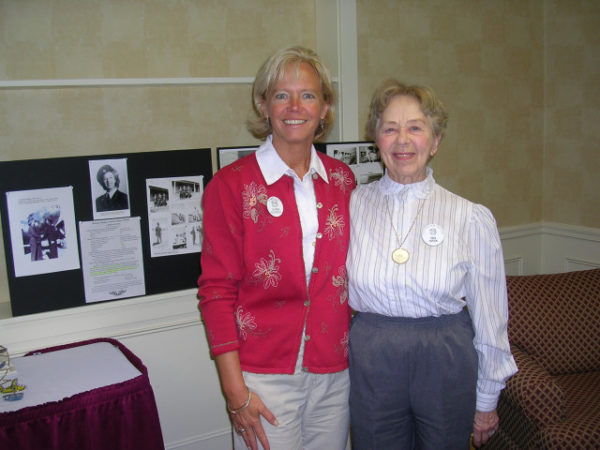The Ninety-Nines, Sara Hayden, WASP WWII
(Pilot's Journey, The Ninety-Nines • ‘Women Take Flight' continued. Pilot Glenna Blackwell shared details about discoveries and friendships and shines a light on Sara Hayden's life of accomplishments with respect.)
“One of the very cool reasons to belong to the Ninety-Nines organization is to meeting other women pilots of course, but also to hear all the wonderful stories and accomplishments. I am so honored and inspired by being involved.
“Here is a photo of one of our older New England Section members along with myself. Sara Hayden is a former WASP. Her life story is amazing. I am just so very happy to have had the opportunity to be her friend. A few years ago she joined many of surviving WASPs in receiving the Gold Congressional Medal of Honor in Washington, D.C. by President Obama. She is now living in Texas near her family, but we all think of her often.”

That is Sara Payne Hayden, WWII Women Airforce Service Pilots (WASP), and this is her listing in The Smithsonian's National Air and Space Museum Wall of Honor:
Women Airforce Service Pilots, WWII
Civilian Rating Commercial, Flight Instructor
USAFR: Active duty 1951 – 1953, Recruiting Officer
WASP Vice President 1975 – 1978, Veterans Affairs 1994 permanent
Women Military Aviators, 1978 founder, President 1980 1982 Clerk of Corporation 1978 – 2003
The Ninety-Nines, Ire, 1947, New England Section and Eastern New England Chapter Offices, Forest of Friendship 1996
Methuen Women's Post 417, The American Legion, Past Commander, Life Member, Adjutant, Boys State Chair
National World War II Memorial, U. S. Korea Foundation, Inc. Women In Military Service for America Memorial.
Commonwealth of Massachusetts, Dedicated Service to U.S. Armed Forces.
Woman of the Year Honor Award, New England Section, 99s.
Distinguished Service Award, Town of Andover, Massachusetts
Past and Future
“It is exciting to see the New England Air Museum get closer to seeing an exhibit honoring the women of New England. The Ninety-Nines (99s) have also awarded a research grant for the project.
“Caroline d’Otreppe, former director of education at NEAM, is our inspiration Caroline produced the Women Take Flight program for more than 10 years. The New England Section 99s were instrumental in the beginning with supplying the many volunteers including Peggy as well as many presenters and speakers. Caroline and her husband Etienne own a lovely inn (Spencer on Main) in Suffield, Conn. They hosted all of our out of town participants. They are such kind and caring people!”
Regarding aerial photography: “I love taking photos from above at all seasons. The landscape if full and healthy during the summer months, colorful and lively in the fall, clean and pure during the winter months and bright and fresh in the spring. For instance….viewing an apple orchard in bloom in the spring is quite a sight.”
Blackwell has won a photo contest hosted by the Laurel Hill Association of Stockbridge, Mass., two years in a row with her aerial images, and recently organized a photo shoot of professional 99s pilots to be used in a national advertising campaign. She flies out of Great Barrington Airport (GBR)and is a CT Chapter member of The Ninety Nines (99s), immediate past New England Section Governor of this international organization of women pilots;
Membership Committee Chair.
National WASP WWII Museum, Texas
The National WASP WWII Museum is a 501 (c)(3) nonprofit relying on contributions and dedicated to honoring the legacy of Women Airforce Service Pilots, educating about aviation history and sciences, and inspiring future generations. The Museum held its grand opening in 2005 on May 28, the same date as the first WASP graduation at Avenger Field in 1943.
Built in 1929 and originally the home of the Sweetwater Airport, Hangar No 2 now houses the exhibits; an expansion project to create an exhibits master plan is to include Hangar No 1, built in 2017.
For additional information visit the Texas State History Museum online, excerpted here:
“These women could fly. These women served proudly. These women are amazing.”
“Women in the 1940s had fairly defined roles in American society. Their primary responsibilities were keeping house and raising children. Piloting Boeing B-17 Flying Fortress bombers and towing targets for live ammunition artillery practice were not standard issue duties for the 1940s American woman. So why did this particular group of women sign up to fly for the U.S. Army Air Forces (AAF) in World War II?”
